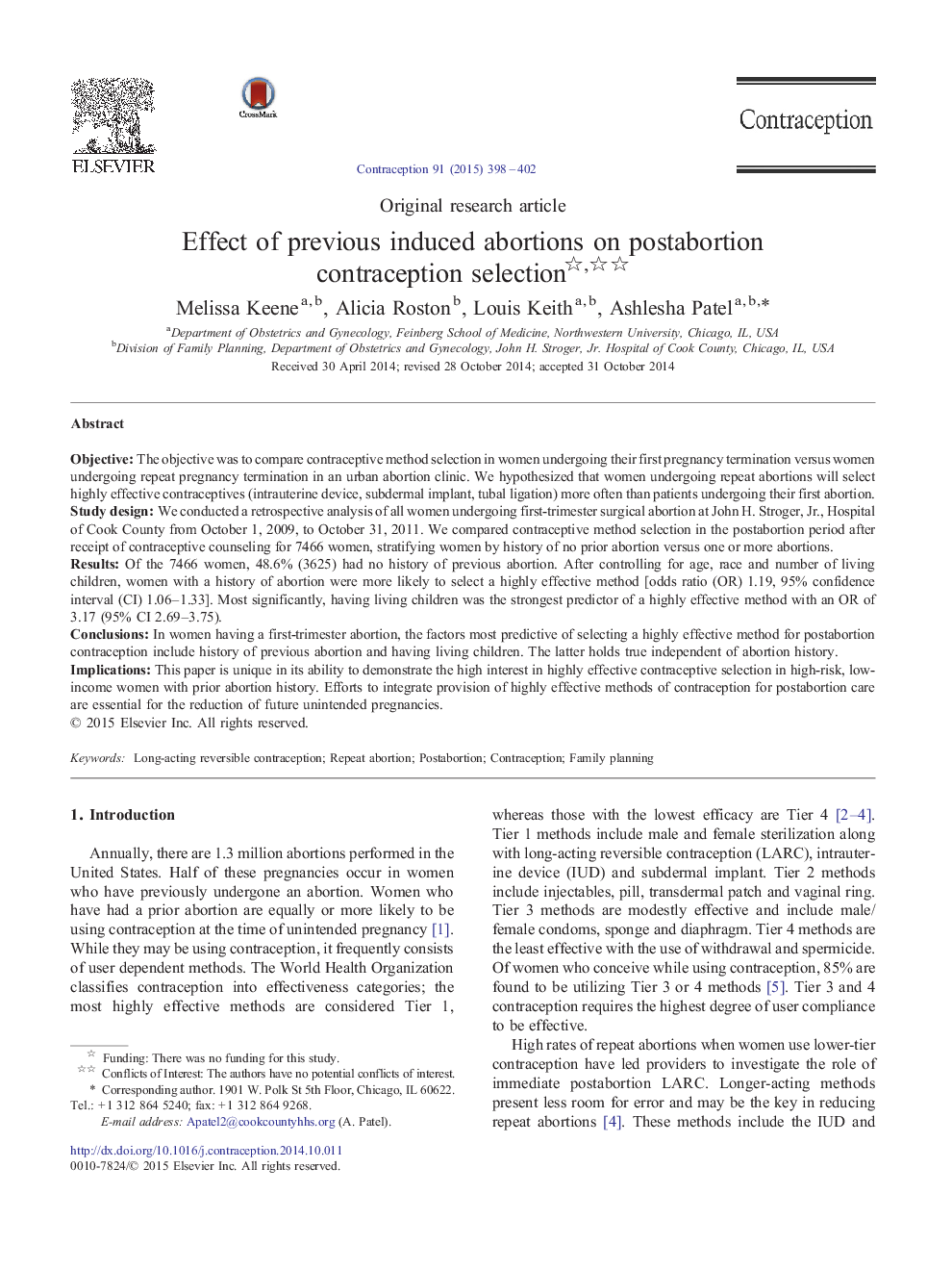| Article ID | Journal | Published Year | Pages | File Type |
|---|---|---|---|---|
| 3913255 | Contraception | 2015 | 5 Pages |
ObjectiveThe objective was to compare contraceptive method selection in women undergoing their first pregnancy termination versus women undergoing repeat pregnancy termination in an urban abortion clinic. We hypothesized that women undergoing repeat abortions will select highly effective contraceptives (intrauterine device, subdermal implant, tubal ligation) more often than patients undergoing their first abortion.Study designWe conducted a retrospective analysis of all women undergoing first-trimester surgical abortion at John H. Stroger, Jr., Hospital of Cook County from October 1, 2009, to October 31, 2011. We compared contraceptive method selection in the postabortion period after receipt of contraceptive counseling for 7466 women, stratifying women by history of no prior abortion versus one or more abortions.ResultsOf the 7466 women, 48.6% (3625) had no history of previous abortion. After controlling for age, race and number of living children, women with a history of abortion were more likely to select a highly effective method [odds ratio (OR) 1.19, 95% confidence interval (CI) 1.06–1.33]. Most significantly, having living children was the strongest predictor of a highly effective method with an OR of 3.17 (95% CI 2.69–3.75).ConclusionsIn women having a first-trimester abortion, the factors most predictive of selecting a highly effective method for postabortion contraception include history of previous abortion and having living children. The latter holds true independent of abortion history.ImplicationsThis paper is unique in its ability to demonstrate the high interest in highly effective contraceptive selection in high-risk, low-income women with prior abortion history. Efforts to integrate provision of highly effective methods of contraception for postabortion care are essential for the reduction of future unintended pregnancies.
